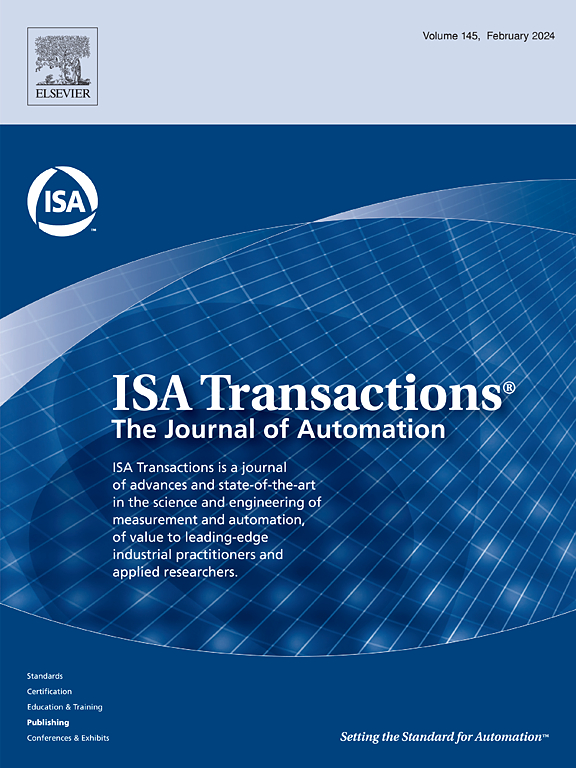Adaptive finite-time synchronized control of multi-robotic fiber placement system with model uncertainties and disturbances
IF 6.5
2区 计算机科学
Q1 AUTOMATION & CONTROL SYSTEMS
引用次数: 0
Abstract
The use of multiple robots to manufacture composite components represents a critical development direction for fiber placement systems (FPSs). In multi-robotic fiber placement systems (MRFPSs) with heterogeneous mechanical structures, robots collaborate to perform fiber placement tasks. Consequently, robot synchronization emerges as a primary factor in determining the performance of the fiber placement process. However, the difficulty in establishing accurate system models and the presence of disturbances are two significant challenges to achieving precise robot synchronization. Additionally, the system is expected to exhibit desirable dynamic characteristics, such as finite-time error convergence. To address these issues and requirements, we propose a novel adaptive finite-time synchronization control (AFSC) algorithm for the system. Specifically, a finite-time sliding mode observer is developed to handle kinematic uncertainty. A novel fast non-singular terminal sliding mode (FNTSM) manifold is constructed in the AFSC algorithm. Moreover, the control algorithm integrates an adaptive law to handle dynamic uncertainty and an adaptive term to counteract disturbances. Performance analysis demonstrates that the AFSC ensures that the coupled, synchronization, and tracking errors converge to zero within finite time. Furthermore, simulations and experiments are conducted to validate the effectiveness of the AFSC algorithm.
具有模型不确定性和干扰的多机器人光纤铺放系统自适应有限时间同步控制。
使用多个机器人制造复合材料部件是光纤放置系统(fps)的一个重要发展方向。在具有异质机械结构的多机器人光纤铺放系统(mrfps)中,机器人协作完成光纤铺放任务。因此,机器人同步成为决定光纤放置过程性能的主要因素。然而,建立精确的系统模型的困难和干扰的存在是实现机器人精确同步的两大挑战。此外,期望系统表现出理想的动态特性,如有限时间误差收敛。为了解决这些问题和要求,我们提出了一种新的自适应有限时间同步控制(AFSC)算法。具体地说,开发了一种有限时间滑模观测器来处理运动不确定性。在AFSC算法中构造了一种新的快速非奇异终端滑模流形。此外,该控制算法还集成了处理动态不确定性的自适应律和抵消干扰的自适应项。性能分析表明,AFSC保证了耦合、同步和跟踪误差在有限时间内收敛到零。通过仿真和实验验证了该算法的有效性。
本文章由计算机程序翻译,如有差异,请以英文原文为准。
求助全文
约1分钟内获得全文
求助全文
来源期刊

ISA transactions
工程技术-工程:综合
CiteScore
11.70
自引率
12.30%
发文量
824
审稿时长
4.4 months
期刊介绍:
ISA Transactions serves as a platform for showcasing advancements in measurement and automation, catering to both industrial practitioners and applied researchers. It covers a wide array of topics within measurement, including sensors, signal processing, data analysis, and fault detection, supported by techniques such as artificial intelligence and communication systems. Automation topics encompass control strategies, modelling, system reliability, and maintenance, alongside optimization and human-machine interaction. The journal targets research and development professionals in control systems, process instrumentation, and automation from academia and industry.
 求助内容:
求助内容: 应助结果提醒方式:
应助结果提醒方式:


